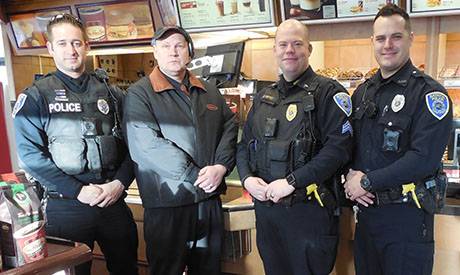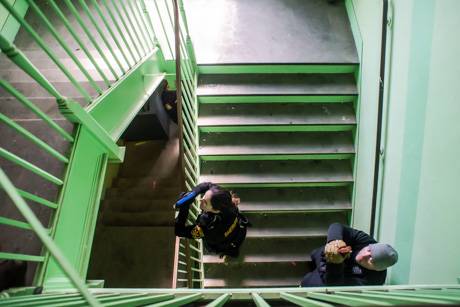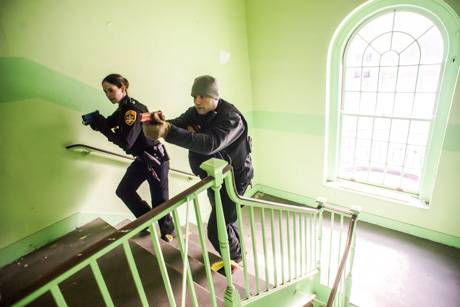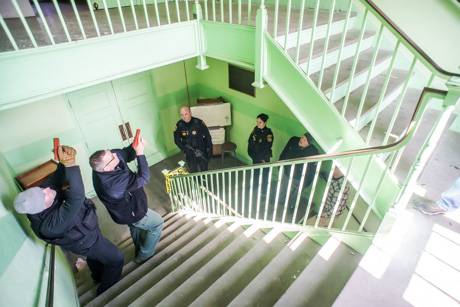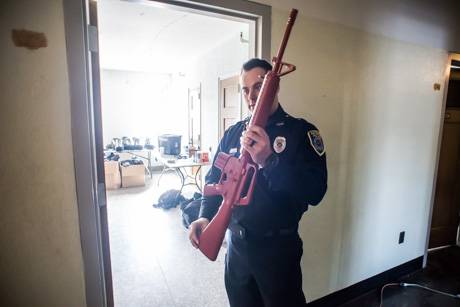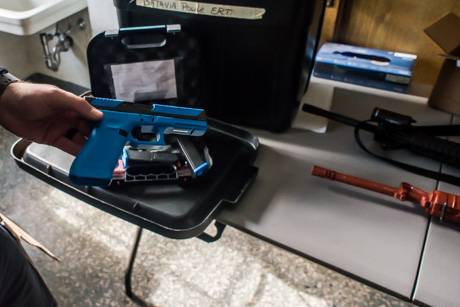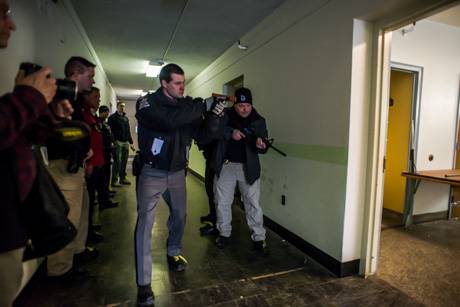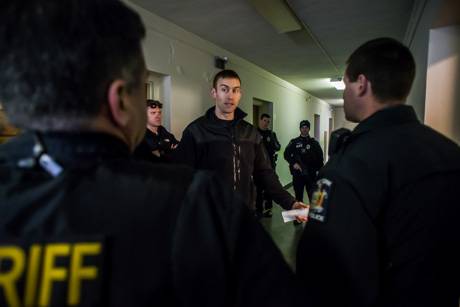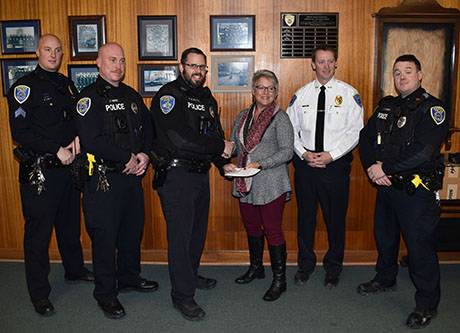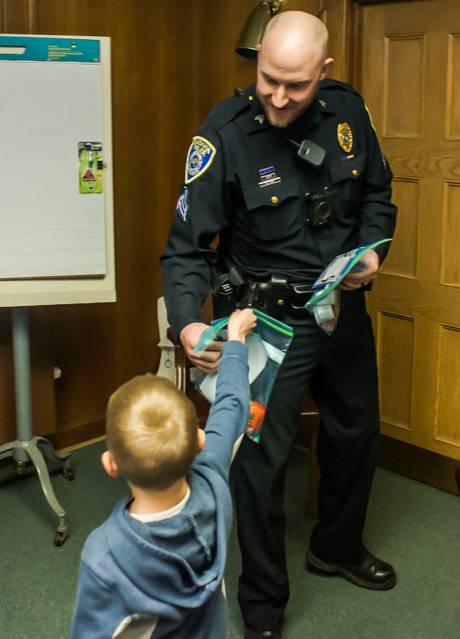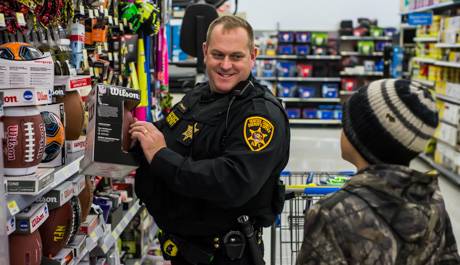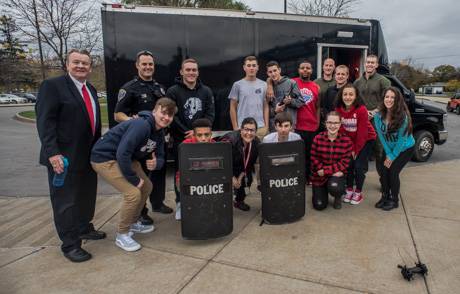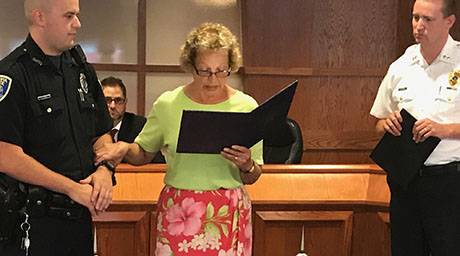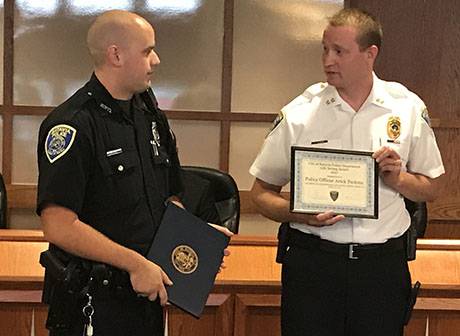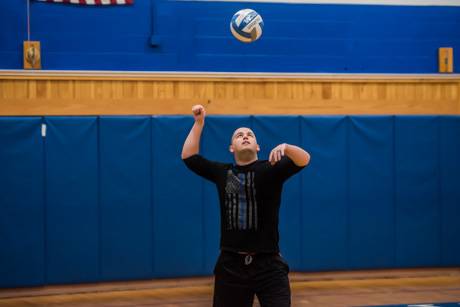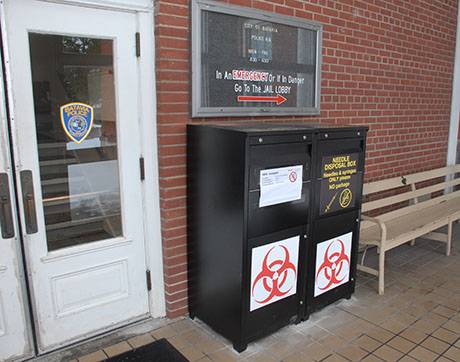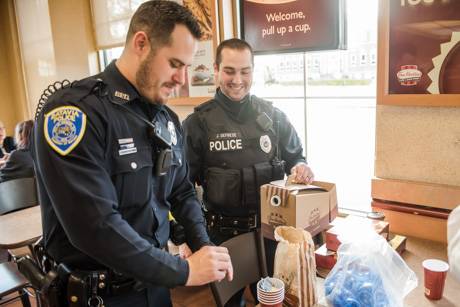The snowfall was pretty heavy just before midnight, Saturday, Dec. 10, 1977. That hour was shift change for Batavia PD then and Officer Douglas D. Squires manned the only patrol car on the road in the city. He was parked at Main and Oak watching the green, yellow, and red lights change, swirls of big snowflakes fall, and any cars that might pass through the intersection.
Down the street, at Quik-N-EZ Food Mart, 40 Oak St., employees were about to close up for the night. The little shop had recently hired some new employees and Squires remembers that two or three times that week they had accidentally triggered the alarms while trying to get them set.
Carl Salway, the only law enforcement officer shot in the line of duty in Genesee County
A police-involved shooting is generally defined as a police officer discharging his weapon in the line of duty.
Based on a search of historical records and conversations with law enforcement professionals in the county who have worked locally for decades, it appears that Officer Doug Squires and Deputy Ryan Young are the only LEOs in Genesee County history to be involved in an officer-involved shooting.
It also appears that only once in Genesee County history has a police officer been shot.
In August 1921, Officer Carl Salway, Batavia PD, came within an inch of his life, literally.
That night, shortly after 10 p.m., he stumbled upon a burglary in progress of an auto storage warehouse owned by Raymond M. Walker at 241 West Main St., Batavia.
Inside were Harold W. Pratt, 27, of 128 South Main St., Batavia, who owned a cider mill, and Earl Lee Smith, of Law St., Batavia, 27.
Pratt shot Salway with a .45-caliber automatic pistol. The bullet passed through Salway's chest, just missing his heart.
Salway would eventually retire from the police department, but not before serving a suspension in 1931 for insubordination.
Squires, now 64, grew up in Batavia but graduated from Byron-Bergen High School. That night in 1977, he was more than a year into his five-year stint with the Batavia Police Department. He would go on to work security for Kodak before moving into sales and marketing with the company. As he moved up, Kodak moved him, first to Orlando, then Birmingham, then Atlanta, and eventually Charlotte, N.C., in 1989, where he lives in with his wife.
He didn't realize until told today that what would transpire just before midnight that Saturday night in 1977 would stand as the only officer-involved shooting in Genesee County history until two nights ago.
As the minutes drew tighter toward midnight that night, a Batavia dispatcher informed Squires the alarm at the Quik-N-EZ Food Mart had gone off again.
Squires put his patrol car in drive and drove down Oak. As he approached, he turned off his lights. The store lights were on and the parking lot was empty.
As he pulled up, he remembered a news story out of Buffalo from a couple of days before. Two police officers had been shot and killed responding to a robbery alarm at the Holiday Inn by the airport.
"I remembered that when that alarm came in for that store, that incident came to mind and I thought I’m not going to just wheel in there and think they made a mistake and set off the alarm again," Squires said.
As he approached, he unholstered his revolver.
Peering in, he saw two female employees, Edwina Heschke, of Batavia, and Debbie Maskell, of Indian Falls, lying face down on the floor. Behind the counter, pulling money out of the cash register was a male in a ski mask.
The man in the ski mask turned out to be William M. Timoney, who was 34 at the time, recently released from Attica on parole, and a resident of Dewey Avenue.
Squires pushed the door open, identified himself and yelled, "freeze."
Timoney looked at Squires, pointed his 14 shot .22 long rifle calibre handgun with a full magazine, at the back of one of the clerks and told Squires, "Pig, you get out of here or they’re both as good as dead."
"At that point," Squires said, "the gloves were off. He's threatening a third party with physical harm and possibly their lives."
Squires fired at Timoney and missed. Timoney ducked behind a counter, popped up again and Squires fired again, missing again.
As the gun battle ensued, another Batavia officer, D.G. Kopper, arrived as back up.
When the perp's head popped up from behind the counter again, between the cash register and orange drink dispenser, Squires fired again. This time he caught Timoney in the face, the bullet hitting his cheek and ear.
"He was quite a mess," Squires said. "He lost his right ear. The shot picked him right up off the floor. The money went one way and the gun went another."
As Sheriff William Sheron noted today, police officers go to work every shift knowing this may be the eight hours where they get shot at or they may have to shoot another person.
Just because there have only been two incidents in Genesee County history, and now three, where an officer either shot someone or has been shot himself, doesn't mean it isn't an ever-present danger. Every chance encounter, when you're in law enforcement, can turn deadly with very little warning.
“Law enforcement officers go to work every day knowing that they may be required to sacrifice their own lives, or take the life of another human being in order to fulfill their obligation of protecting the citizens of our communities," Sheron said.
Two nights ago, Deputy Ryan Young faced the challenging decision of whether to fire his weapon after responding to a report of a disturbance and shots fired at the Log Cabin Restaurant in Indian Falls. As Young and other officers pulled into the parking lot, Keith Kent, 61, of Albion, fired another shot. Young and his colleagues yelled at Kent to drop his weapon. He didn't. Rather, Kent turned -- according to information available so far -- toward Young and pointed his pistol at him.
As Undersheriff Gregory Walker put it describing the incident while talking with reporters on Gilmore Road early Thursday morning, "Our officer did take the shot and the suspect was killed."
Timoney, the 1977 robber, was lucky. He lived. After he was shot, Squires and Kopper rushed to his side and cuffed him.
Timoney, who used a gun stolen from a home in Alexander, was treated at St. Jerome Hospital then hauled before County Court Judge Glenn R. Morton, charged with robbery in the first degree along with several other charges, then jailed without bail.
The district attorney in 1977 was Ronald L. Fancher. He settled on a plea agreement for Timoney, attempted robbery. Timoney entered a guilty plea and was sent to state prison for less than four years. He was released in 1982. By 1984, he was back in prison for an armed robbery in Queens, serving a maximum 15-year sentence. He was released in 2000. In 2000, his name pops up in a couple of stories in the New York Daily News about homeless people in the city.
Squires described shooting Timoney as "a surreal experience." He was put on paid leave and he had to turn over his revolver for ballistic testing.
"I had a lot of sleepless nights," he said. "It was quite an experience. Most police officers never even draw their weapons or let alone fire their weapons over a 20 or 30-year career. Here, I'm on the job for at most a couple of years and I run into something like this."
Eugene Jankowski, who served Batavia PD for more than 35 years, starting in 1978, was a corrections officer in the Genesee County Jail the night Squires shot Timoney. He remembers Timoney coming into the jail with a big bandage on his ear.
Now City Council president, Jankowski is a firearms expert and led in the creation of the county's Emergency Response Team.
Even though Jankowski never encountered a situation that escalated into the need to shoot somebody, he faced many life-and-death decisions during his career. Training and experience are critical to helping officers handle the unexpected, he said.
"I’ve found scenario-based firearms and defensive tactics training, combined with state law and department policy, was the most beneficial to me," Jankowski said. "That, along with real-life experience helped me to physically and mentally prepare for many types of use-of-force encounters."
Squires said he thinks about Dec. 10, 1977, every time another police shooting hits the news.
"Until you're a police officer and you go through it, there's really not much you can think about to know what it's like," he said.
His advice for Young or other officers who must fire their weapon at suspects: Don't second guess yourself.
"And don't let others second guess you. Just know that it's your job and you have to do what you have to do to defend yourself or innocent bystanders. You have to know what you did is right."


